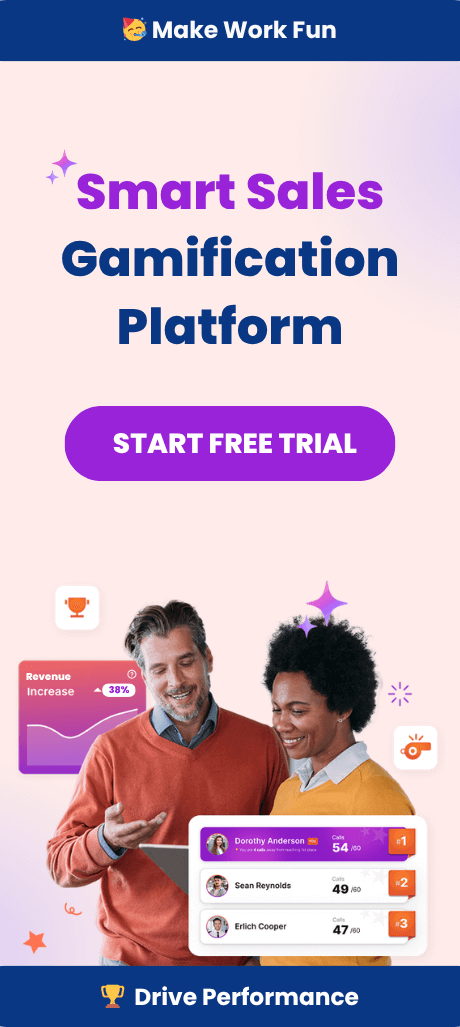Employee benefits are more than just perks; they are essential for fostering a motivated and productive workforce. Research shows that a strong employee benefits package can significantly impact job satisfaction, reducing turnover rates and increasing engagement. According to a study by the Society for Human Resource Management (SHRM), 92% of employees consider benefits important to their overall job satisfaction.
Employee benefits examples include health insurance, retirement plans, paid time off, wellness programs, and flexible working arrangements. Understanding these examples helps companies determine which benefits to offer based on legal requirements and employee preferences.
Benefits like health insurance, retirement plans, and paid time off contribute to a sense of security and well-being, which are crucial for maintaining high levels of productivity. When employees feel supported, they are more likely to invest their time and effort into their work, leading to better performance and outcomes for the company.
Additionally, offering competitive benefits can attract top talent, giving the organization a competitive edge in the job market. Companies that invest in their employees through comprehensive benefits are viewed more favorably, fostering loyalty and reducing turnover rates. This, in turn, saves the company money on recruitment and
Health and Wellness Benefits

Types of employee benefits encompass a broad range of offerings that support the health, financial security, and work-life balance of employees. Health benefits are critical in maintaining a healthy and productive workforce. Offering health insurance, gym memberships, and mental health support can lead to substantial improvements in employee well-being. A study by the American Psychological Association found that employees who feel supported in their health and well-being are 31% more productive. Wellness programs that include physical fitness, stress management
Physical Health Programs and Employee Assistance Programs
Health insurance is the cornerstone of any wellness program. Providing comprehensive medical, dental, and vision coverage ensures that employees can access necessary healthcare services. Regular check-ups and preventive care help detect and treat health issues early, reducing the risk of serious illnesses that can lead to long-term absences.
An employee assistance program (EAP) is essential for mental health support, offering confidential counseling and support services for issues such as stress, anxiety, depression, substance abuse, financial troubles, and relationship problems. EAPs benefit both employees and employers by improving productivity, well-being, and reducing turnover and absenteeism rates.
Disability insurance is another crucial component, offering financial assistance to employees who are unable to work due to a serious injury or illness. It pays workers a percentage of their paychecks, helping them remain financially stable until they can return to their jobs.
Gym memberships and fitness programs encourage employees to stay active, which has numerous benefits for both physical and mental health. Regular physical activity
Flexible Work Arrangements and Employee Benefits Package
Flexible work arrangements, such as remote work, flexible hours, and compressed workweeks, are increasingly popular. These arrangements provide employees with the flexibility to manage their work-life balance, leading to higher job satisfaction and productivity. According to a study by Stanford University, remote workers are 13% more productive and have lower attrition rates than their office-bound counterparts. Flexibility in the workplace can reduce burnout and increase employee loyalty, contributing to a more engaged and efficient workforce. Additionally, offering voluntary benefits can complement flexible work arrangements and health insurance, further
Professional Development Opportunities
Investing in professional development is a powerful way to boost employee engagement. Providing opportunities for training, workshops, and tuition reimbursement shows employees that their growth is valued. Research by LinkedIn Learning found that 94% of employees would stay longer at a company that invests in their career development. Professional development not only enhances skills but also fosters a culture of continuous improvement, leading to higher productivity and job satisfaction.
Recognition and Reward Programs
Recognition and reward programs are vital for fostering a positive work environment and driving employee engagement. One innovative approach to enhancing these programs is through gamification, and Spinify is at the forefront of this trend. Spinify gamifies the workplace by turning performance metrics into engaging, competitive games, making recognition and rewards more effective and enjoyable.
In addition to these programs, offering fringe benefits such as PTO, flexible work schedules, and professional development can significantly enhance employee satisfaction.
The Concept of Gamification
Gamification involves applying game-design elements to non-game contexts, such as the workplace. It taps into people’s natural desires for competition, achievement, and recognition. Spinify uses leaderboards, point systems, and badges to transform mundane tasks into exciting challenges, motivating employees to excel.
Real-Time Recognition and Feedback
Spinify provides real-time feedback and recognition, which is crucial for maintaining motivation. Employees can see their progress on leaderboards, earn points for hitting targets, and receive badges for milestones. This immediate feedback loop reinforces positive behavior and keeps employees engaged. According to a study by the Harvard Business Review, real-time feedback can improve employee performance by up to 39%.
Boosting Motivation and Productivity

The competitive element of gamification drives employees to perform better. Spinify allows teams and individuals to compete in a friendly manner, striving to top the leaderboard or earn the most points. This competitive spirit enhances motivation and productivity. Research from the Journal of Applied Psychology shows that gamification can increase employee engagement by 48%, leading to higher productivity and job satisfaction.
Creating a Fun and Engaging Work Environment
Spinify makes work fun by incorporating game elements into daily tasks. Employees enjoy earning rewards, climbing the leaderboard, and celebrating their achievements. This fun factor reduces stress and burnout, contributing to a more positive work environment. A study by the International Journal of Human-Computer Studies found that gamification can reduce workplace stress by 25%, making employees happier and more engaged.
Customizable and Scalable Solutions
One of Spinify’s strengths is its flexibility. Organizations can customize the platform to align with their specific goals and metrics. Whether it’s sales targets, customer service goals, or project milestones, Spinify can be tailored to suit various departments and objectives. This scalability ensures that recognition and rewards programs remain relevant and impactful across the entire organization.
Fostering Collaboration and Team Spirit
Spinify not only encourages individual achievement but also fosters collaboration. Team-based challenges and goals promote a sense of camaraderie and collective effort. Employees can recognize each other’s contributions by awarding points and badges, strengthening team spirit and enhancing collaboration. According to research published in the Academy of Management Journal, peer recognition programs significantly boost teamwork and organizational commitment.
Work-Life Balance Initiatives and Retirement Benefits
Work-life balance initiatives such as paid time off, parental leave, and vacation days are essential for maintaining employee well-being. Legally required benefits, such as Social Security, Medicare, and unemployment insurance, are also crucial as they form the foundation of an overall benefits package. Policies that support work-life balance help employees manage their personal and professional lives more effectively. A study by the Corporate Executive Board found that employees who feel they have a good work-life balance work 21% harder than those who don’t. Encouraging employees to take time off and recharge can lead to increased productivity and reduced burnout.
Employee assistance programs (EAPs) provide confidential counseling and support services to workers experiencing personal or work-related difficulties, such as stress, anxiety, depression, substance abuse, financial troubles, and relationship problems. EAPs benefit both employees and employers by improving productivity, well-being, and reducing turnover and absenteeism rates.
Paid Time Off (PTO)
Paid time off is a critical component of work-life balance. Allowing employees to take time off for vacations, personal days, or illness without financial penalties helps them rest and recharge. A well-rested employee is more focused, creative, and productive. According to a study by Project: Time Off, employees who take regular vacations are more likely to receive positive performance reviews and promotions.
Parental Leave
Offering parental leave is essential for supporting employees with families. Parental leave allows new parents to spend time with their newborns, fostering a healthy work-life balance and reducing stress. Companies that provide generous parental leave policies demonstrate their commitment to family values, which can enhance employee loyalty and retention. Research by the Boston College Center for Work & Family found that companies with supportive parental leave policies have higher levels of employee satisfaction and lower turnover rates.
Flexible Vacation Policies
Flexible vacation policies, such as unlimited vacation days or flexible PTO, give employees more control over their time off. These policies trust employees to manage their workloads while taking the time they need to recharge. A study by the University of California found that employees with flexible vacation policies reported higher job satisfaction and lower stress levels.
Remote Work and Flexibility
Remote work and flexible schedules are also vital components of work-life balance. Allowing employees to work from home or adjust their hours to fit personal needs can reduce stress and increase productivity. According to a study by Owl Labs, remote workers are 22% happier in their jobs than those who work on-site, leading
Maximizing Employee Productivity, Retention, and Engagement through Strategic Benefits
Offering a comprehensive benefits package that includes health and wellness benefits, flexible work arrangements, professional development opportunities, and effective recognition and reward programs can significantly boost employee productivity, engagement, and employee retention. An employee benefit such as medical insurance, life insurance, retirement plans, and disability insurance, along with modern examples like mental health benefits and employee assistance programs, can make a substantial difference. Platforms like Spinify leverage gamification to enhance recognition and rewards, making them more impactful and enjoyable.
By implementing these strategies, organizations can create a positive and engaging work environment that drives success. Employee benefits packages play a crucial role in total compensation and rewards, making them essential for attracting and retaining top talent. As a next step, consider exploring more in-depth strategies on how to implement these benefits effectively in your organization.
Providing attractive benefits can help retain employees by addressing the challenge of employee retention and boosting overall job satisfaction.
Additionally, it is important to note that statutory benefits, such as unemployment insurance, are mandatory under local, state, and federal



